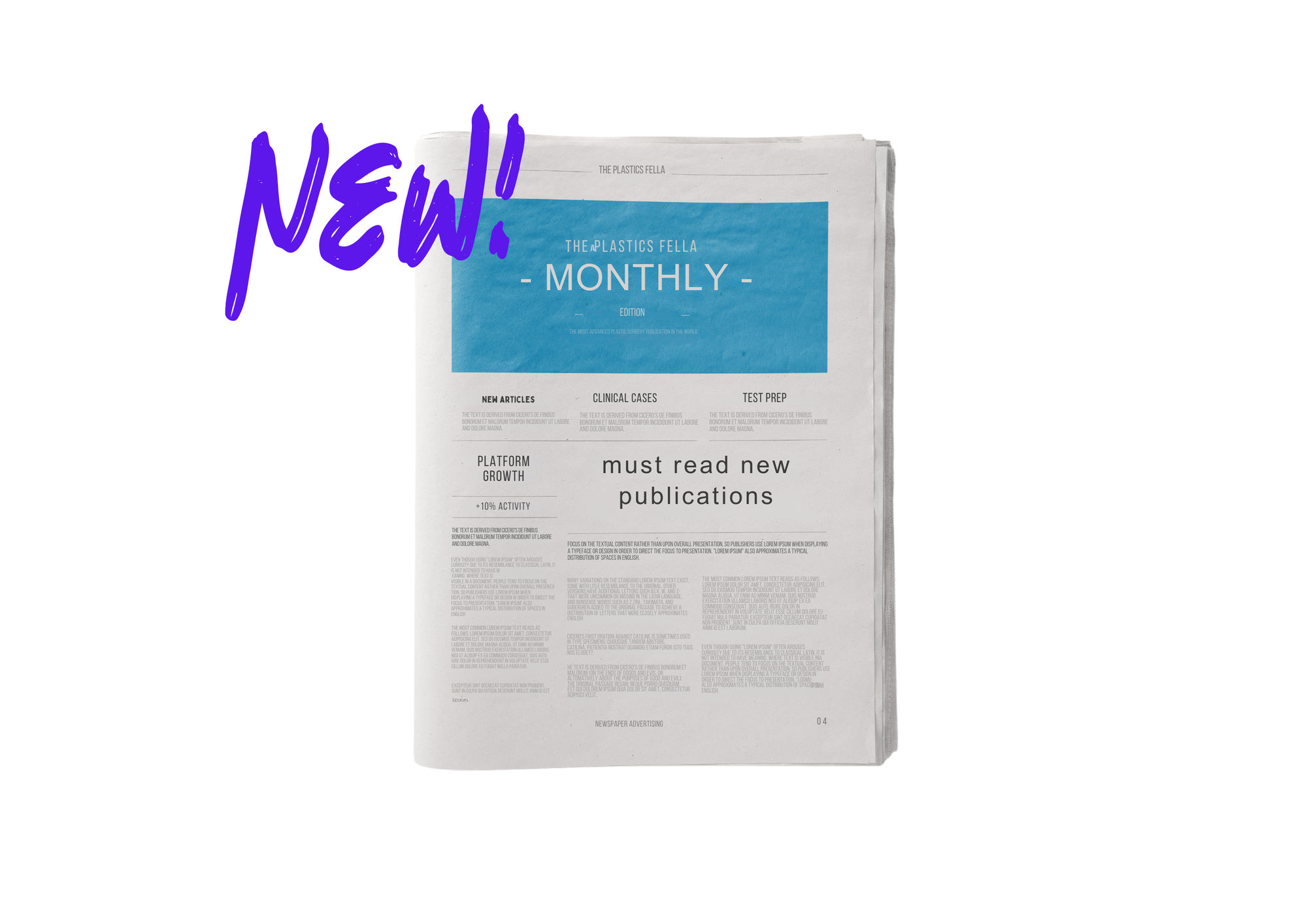In this week's edition
- ✍️ Letter from P'Fella
A new monthly “journal” from the P'Fella. - 🤓 The Sunday Quiz + Leaderboard
How well do you know basal cell carcinoma? - 🎙️ Behind the 'Fella
Episode 2 is out now! - 📖 What Does the Evidence Say?
What is the ideal margin for basal cell carcinoma? - 🔥 Recommended Articles of the Week
BCC: The best surgical margin, margins in BCC of the face, & excision margins; with 1-sentence summaries. - 💕 Feedback
Suggest ideas & give feedback!
A Letter from P'Fella
Building in Public: A New Monthly “Journal”
As you well know, our platform thrives on your contributions — your feedback, ideas, and suggestions are integral to enhancing the entire educational experience. I'm excited to announce a new initiative we're building with your input: a monthly journal delivered directly to your inbox.
👇
What’s the Big Idea?
Every month, you’ll get an email packed with the latest from ThePlasticsFella — think of it as ThePlasticsPaper on steroids. We're talking deep dives into new publications, clinical cases, and prep materials, all centered around evidence-based plastic surgery.
You'll get detailed explanations of new content on the platform, insights into the creation process, recommendations for further reading complete with concise summaries, and even a behind-the-scenes look at our growth — new member statistics, user activity, and more.
Think of it as a more formal and in-depth version of ThePlasticsPaper, dedicated entirely to advancing your knowledge. And don't worry, ThePlasticsPaper isn’t going anywhere; you'll continue to receive it every Sunday.

I Need Your Help!
First, we need a name for this journal. Something that encapsulates its essence without sounding mundane — easier said than done, right? I’d love to hear your creative ideas.
Second, I want to know what you'd like to see in this monthly edition. What topics, features, or types of content are you most interested in?
This new publication represents a significant step forward, and for now, it will be available to ThePlasticsPro users as we fine-tune and develop the format.
I’m eager to hear your suggestions and look forward to making this journal something truly special.
With love,
P'Fella ❤️
P.S. This is the 100th edition of thePlasticsPapaer, thank you all for reading it.
tl;dr
👉 Our new monthly publication will deep dive into plastic surgery articles, clinical cases, and prep materials.
👉 It'll include plastics content, recommended reads, and platform growth stats.
👉 This'll initially be available to ThePlasticsPro users.
👉 We're looking forward to your name suggestions and content ideas.
The Sunday Quiz
How Well Do You Know Basal Cell Carcinomas?
Welcome to the next round of The Weekly Quiz.
Each edition of thePlasticsPaper includes a quiz question designed to challenge and engage our readers. Keep your wits about you and join in every week—the winner at the end of six rounds will earn you a $100 voucher.
Behind the ‘Fella
Second Episode Released!
More exciting news: "Behind the Fella" Episode 02 is now live on Spotify and Apple.
These podcast episodes explore behind-the-scenes of our practice, featuring exclusive insights from team meetings and trending discussions on plastic surgery with our fellows.
- Live quiz session with Sunday quiz winners
- Flashcards: Anki, AI-generated flashcards or humans?
- Flexor Tenosynovitis: Surgical approach, Washout, Closure.
- Fellows' Debate: Absorbable sutures vs. non -absorbable sutures
What Does the Evidence Say?
What's the Ideal Margin for Basal Cell Carcinoma?
The optimal surgical margins for basal cell carcinomas (BCCs) depend on various factors, including tumor size, location, and histological subtype. For small, well-defined primary BCCs, a 3mm margin is sufficient, while larger or high-risk BCCs may require a 4-6mm margin (Luz 2015, Quazi 2020). However, the accuracy of visual assessment of BCC margins can vary, with some studies suggesting a 2mm margin is adequate (Epstein 1973, Gulleth 2010). Recurrence rates for BCCs with 2-5mm margins range from 0.39-3.96% (Gulleth 2010). Factors associated with incomplete excision and higher recurrence rates include age, lesion size, BCC subtype, location, and infiltration depth (Codazzi 2014). Positive surgical margins, particularly in central facial locations, are associated with a higher risk of recurrence (Bozan 2015).
Articles of the Week
3 Interesting Articles with 1 Sentence Summaries.
From systematically analyzed data encompassing 16,066 lesions, this article found that a 3-mm surgical margin is generally sufficient to achieve a 95% cure rate for nonmorpheaform BCCs that are 2 cm or smaller.
Evaluates the outcomes of BCC of the head and neck, focusing on those with positive surgical margins. The study found that 14.9% of lesions had positive surgical margins, with a recurrence rate of 26.1% in these cases.
The study compared marked surgical margins with histological margins on 100 BCCs. The findings show that current surgical practices maintain a balance between low rates of incomplete excision and minimal normal skin sacrifice.


